|
Co-sponsors of the 2023 Winning Out
Certificates



| |
A useful
guide from Cornwall Agility Club...
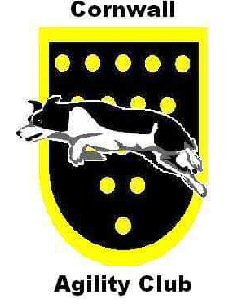 The
Cornwall AC Ring Party Procedure Manual was put this together a
while back, after the Committee heard that some competitors were 'too scared' to
offer to help at shows as they simply did not know what was involved. Some of it
will be specific to CAC but a lot of it applies to most shows, regardless of
whether operating on a manual system or an electronic system. Thank you to Kim
Lawer and the CAC Committee for sharing their new, updated version. Hope it helps! The
Cornwall AC Ring Party Procedure Manual was put this together a
while back, after the Committee heard that some competitors were 'too scared' to
offer to help at shows as they simply did not know what was involved. Some of it
will be specific to CAC but a lot of it applies to most shows, regardless of
whether operating on a manual system or an electronic system. Thank you to Kim
Lawer and the CAC Committee for sharing their new, updated version. Hope it helps!
There are various jobs involved at an agility show to ensure that the rings
and the whole show runs smoothly. Some of these may vary slightly depending on
if the show is operating on a manual or an electronic system such as e-gility
Hopefully we have covered the main principles of both
Pole
Picker
Required for both manual and electronic systems. (Sadly poles that replace
themselves have not been invented yet.) The pole pickers - usually a couple of
them - will be seated inside the edge of the ring to do, just that. May seem an
easy task, but can be a couple more bits to it than meets the eye.
1. If it is the first or last jump that is knocked down, whatever you do, do
not pass your arm through the fence and the timing gates to pick it up. Doing so can often be
the cause of the timing equipment being stopped, which
would often mean a very unhappy handler - especially they if gone clear! - having to
re-run the course from scratch. KC regulations mean that any prior clear round
would not stand.
2. Be aware of the course. Sometimes the same fence is used more than once in
the course. Do not attempt to pick it up until the dog has finished the whole
run. The dog will not be penalised for the pole not being there, but just needs
to ensure runs between the wings. There are a few dogs on the circuit that may
run faster than expected, run slightly off course and take no prisoners of
anyone in their way! On the same note, if a dog is aware of a human running
across the ring out of corner of eye, may well become distracted.
3. Do not have food or drink in the ring with you.
4. Some dogs may decide to come and say hello. Pplease try to ignore them
even if they do decide you need a wash!
5. Keep awake! Especially on a hot day, pole pickers have been known to
nod off!
Leads
Person
Purely responsible for taking the lead from the handler on the start line,
and placing it near to the finish. This is a simple, but very important job.
Some handlers may also pass you various other items – toys, titbits, keys,
clothing etc – try and keep all together and safe
1. Some shows will use buckets to place the lead etc. in (CAC prefer for dog
safety not to). If this is the case, please ensure there are no other items in
the bucket, dangerous handles etc. Safest place is usually in a flat box for
instance, or on ground behind the ring tent
2. Do not take a line between start and finish that crosses the sight of the
Scrime. That split second of them being unable to see the judge could
result in incorrect marking.
3. Be aware that some handlers may throw their lead at you. You do not
want to be hit by flying lead clips etc!
4. Avoid hanging leads over fencing, for same reason as point one.
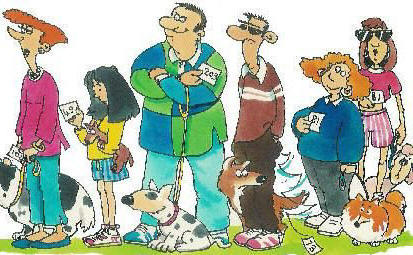 Caller Caller
The Caller is the person who stands with the list of all entries in that
class for people to check in with. These may or may not be used with
electronic systems
1. Liaise with Ring Manager how many dogs they want in the queue – usually
10 - and try not to take any more than what agreed. Some competitors will give
you various reasons as to why when their running order is 100 that they should
be allowed to run in the first 10. Ring party are however, as a general rule,
allowed to queue jump. Basically use your common sense.
2. Make yourself visible. Best place to stand is at the end of the queue.
This will also help you monitor how many are already in the queue. Often you
can find callers standing or sitting close to the ring entrance, talking with other
ring party etc. This makes it difficult for a competitor trying to book in not
only to spot you, but can cause issues with excitable or nervous dogs. CAC
provide a high-viz vest for callers.
3. Ensure that the queue never crosses the exit to the ring. This can
obviously cause issues with dogs finishing their runs. On the same note, do not
let your queue get tangled up with a queue for the ring next door. If numbers
are kept under control, this should not happen.
Pads
Person / Ring Controller
This Is the person who hands out the judging slips to the handler prior to their
run or books them in on the e-gility system
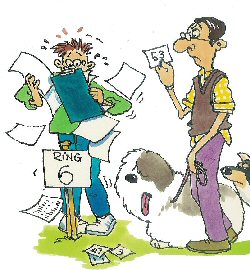 Manual Pads Manual Pads
1. Ask the next handler to go on the line for their running order (this is
the order that the judging slips will be in the pad)
2. Double check name and also dogs name (some handlers may have more than one
dog in that class and must run them in the appropriate running order, or face
elimination)
3. Hand the judging slip to the scrime, before going back for the next
4. Some will work their way along the queue handing out judging slips. This
is a practice best avoided, as often results in tickets become crumpled, soggy,
blown away or chewed etc!
E-gility Ring Controller
1. A holding zone will have been created, that will allow say a maximum of 3
or 4 dogs in. Although the RC can do a number of things with their tablet, their
prime function is to ensure that competitors enter the ring in the correct
sequence so that the Scrime does not have to waste time checking their name or
sorting out mix-ups with results. The Ring Controller positions themselves at
the entrance to the HZ and controls who may enter (checking them off on the
tablet as they do so). As long as competitors stay in line (which the RC will
ensure), their names will pop up in the scrime’s tablet in the correct order.
2. Take the dog’s running order number and enter into the tablet by selecting
Ready to Run. If the handler does not know it, then you can search for it using
the magnifying glass and typing in say their surname or dog’s pet name. Another
way this can be done is pressing "Review class" and scrolling through the list
to find them – can be time consuming this way however if a big class!
3. Make sure those booked in stay in order, and dogs enter ring then as
normal
4. You can do some other things to, such as mark someone in late, withdraw a
dog or change handler. If for any reason someone does have to pull out of the
line, you can deal with this by selecting them and pressing "Not ready"
5. If LHO is being ran, once the last of the first height has run, press the
button for the next height
 Scrime Scrime
The Scrime is the person responsible for marking down any faults the judge
may give, onto the judging slip, along with the course time, and also informing
the handler that they can commence their run.
1. When dog on start line, check judge is in position, and also look round
to ensure that no poles are left on the ground from previous run.
2. Ensure you are aware of the course time from the judge and mark in the box
provided.
3. Glance at timing box and double check that has actually been stopped by
the previous dog.
4. Check that the judge is ready. They may give you a signal such as a thumbs
up.
5. When ready to go, clearly signal to the handler with a call of 'When
you are ready' or 'In your own time.' Try to include the handler's first name as
it acts as a final check that you have been given the correct judging slip!
Under KC and UKA rules, handler and dog will be eliminated if they start before you
have informed them. Some judges prefer to start a competitor themselves using a
whistle. IN that case, make sure still you double check tht you have the correct
competitor and that the judge is aware you are ready.
6. Do not take your eyes of the judge. The judge will have confirmed with you
- or ask if unsure - what their hand signals for each type of fault will be. Never
ever
watch the dog and try and mark yourself. A judge may not see a pole drop, or
something funny happen in the weaves, but their decision is final.
7. A fence down is marked as a 5, refusals 5R. If 3 5Rs, it then becomes an
elimination and the judge should then give you their 'E' sign - usually crossed
arms, or sometimes a slit of the throat! If you are unsure, then check
with the judge when the run is finished
8. When the dog has crossed the finish jump, mark down the dog's time in the
box provided on the judging slip and hand to score person who is normally sitting
in the tent immediately behind you. Should this not be the case, then the Ring
Manager will usually take them in small piles over to wherever the scoring
may be being done.
9. Ensure your writing is legible!
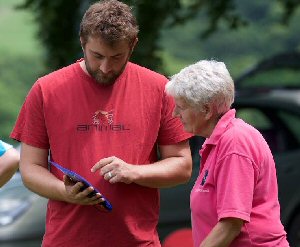 Scriming with e-gility Scriming with e-gility
1. Basically procedure is same as manual scoring except you will be entering onto a tablet and not
writing on a slip.
2. Press Scrime to start.
3. Press Ready Runner and check you have the correct handler.
4. Press (or use the dabbers) 5 for 5 faults, R for Refusal. If three Rs, then the
system will check with you if becoming an E. H is for Hand, E for Elimination or C
for clear. If you make an error, correct by pressing Delete
5. Once round is completed then enter the dog's time.
6. Press 'Clear ring' to get ready for next dog.
Scorer
Not required with e-gility
Is person responsible for writing up the scores, and usually guarder of the
sweets and biscuits!
1. Make sure you are aware if a class is graded or combined! If graded then
you will need to ensure split the grades and fill in on the separate results
sheets
2. Ensure you are aware of the course time
3. Take the judging slips from the Scrime / Ring Manager.
4. Locate dogs running order on master score sheet
5. Fill in the columns for number of faults, dogs time, and then total
faults; If a dog has got time faults these also need to be recorded; Eg – Dog
has no poles down etc, course time is 40 seconds, dogs time is 42.25 seconds =
dogs faults will be 2.25 seconds
6. Put a line through the judging slip when recorded
7. Place the judging slips in piles using bull dog clips – a pile of the
clear rounds, then say those with faults – keep these in time order with the
quickest on top, and a pile for eliminations
8. Once all entered, go through the judging slips to check in correct order,
and inform ring manager of any run offs (dogs with identical times). These will
then have to be called back for a deciding run
9. Enter the top dogs on the results sheets, to the designated placings, then
list (by dogs ring number) those that have unplaced clear rounds.
10. Be aware also if judge is awarding a judges special, as this will also
need to be noted.
11. Help the ring manager file everything in the envelope or plastic folder
ready to be taken to the marquee for presentations. Please ensure that this is
done promptly after each class so rosettes and trophies can be prepared
12. Ensure all writing is legible! Results will not only be announced from
these, but the Show Secretary also has to type up the results after the show.
13. Do not eat all the biscuits!
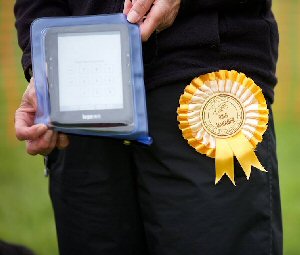 Ring
Manager Ring
Manager
If you have been asked to manage a ring and are not sure what is required the
following can be used as a guide.
The judge maybe the captain of the ship but you are first mate who runs the
ring. Your job is to make sure the ring run smoothly, to ensure that the ring party
is catered for and the judge has everything they require. You should be able to do
all jobs on the ring and be prepared to step in, if necessary, but better to
delegate.
Try not to commit to doing any jobs at particular times. This should
leave you free to cover if someone needs to nip to the loo or go off to walk a
course. Make sure you will have enough people available at all times (CAC
allocate helpers per ring and have sheets for them to fill in per class and jobs
they can cover, including packing up at end of day) and don’t turn down any
offers of help. CAC will have a team of floaters that can help cover you if need
be.
Keep a listen in on radios for other rings asking for help. If you have
spare bodies can send them up! Likewise can get advance warning to end of
classes etc. if you have helpers needing to run in that class.
1. Aim to be the first on the ring in the morning. Usually the course
should
have been set up the day before, however will need pegging and maybe
some tweaking by the judge and numbers putting out. Sometimes the judge may
not have sent over the course plan in advance so will need building as soon as
they arrive. Score tents may also need to be erected if it had been too windy to leave
up overnight.
2. When the timing person puts up the timing equipment, try to make sure you
can move it into the tent should it start to rain etc. Test the electronic
timing.
3. Check the ring fencing is not laying all over and is well pegged.
4. Ensure any spare equipment is stacked tidily out of the way so not to
cause a hazard
5. Liaise your judge and agree with them how they would like the ring run.
Some will be happy to leave everything to you. Others will like to suggest queue
sizes, start/finish procedures and positions of pole pickers etc.
6. Collect your ring box from the marquee. At CAC shows, this will contain:-
- E-gility Tablets
- Radio – check which channel using
- Rubbish sack
- Disinfectant spray
- Hi viz vests – Ring Managers and Caller
- Refreshments - This should
include a mixture of hot and cold drinks,
flasks of hot water - check marquee staff have filled them - milk, sugar,
cups, sweets and biscuits etc. Keep an eye on levels throughout the day and
ensure topped up as and when required.
7. Make sure you know where any spare poles and weave poles are. Some dogs
have been known to break them!
8. Liaise with the marquee staff on lunch arrangements, what time stopping
etc.
9. If you are running a dog, or need to go and check on them etc, make sure
all are aware, and have someone to cover for you.
10. Whilst the ring is running, keep an eye on the equipment. For
instance, has anything
come unpegged?
11. Keep the 'calling to' board, if there is one, up to date
12. Warn people that the class is closing well in advance. Ask the PA person
to call to end of class. For instance, class closing – 10 minutes... this class will close
in 2 minutes, class closed. Calls cannot always be put out while making a
presentation, so try to avoid calling at this time.
13. Once a class has been finished, help the Scorer check for any run offs,
and put a call to the marquee for these to return to the ring if there are.
Otherwise, ensure the results are written up, and all paperwork for that class
returned to the marquee promptl. CAC will be aiming to do all presentations as
soon as possible after each class has finished.
14. If you have an Anysize class running in your ring, make sure you are
aware of the jump heights for Large and Small / Medium dogs. Also be aware that
although the classes may be split by size for processing, it is one set of
results.
15. End of day. Make sure any rubbish is cleared from the score tent,
ring boxes returned to the marquee and numbers picked up. Notify the marquee
that your ring is finished, so they can arrange for the next days course to
be set up where possible, or break down for loading.
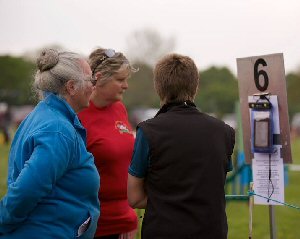 E-gility System E-gility System
Mainly as above, however some little jobs
to be done on the tablets
1. When course ready for walking, press this button and enter time starting
back, walking over lunch etc.
2. Once a class has finished - after both heights if LHO
-press Close Class
and Print Results. This will send the results to the printer in the marquee
ready for presentations.
End of day
The day isn't quite over when the last competitor has run. There is still the
equipment to sort. As CAC run two day shows, then the procedure will depend on
which day it is, and boxes will also be on the helpers sheets to ensure
assistance.
Saturday
– The rings will need to be prepared for the
next day. If the Sunday judge / course plan is available, then the first courses
will need to be set up, or if not, then the equipment stacked to side of ring to
ensure a quick set up on the Sunday morning.
Sunday
– As end of the show, then the equipment will
be needed to be loaded onto the equipment provider's van for them to go home. Also, ring
fencing needs to be broken down, rubbish cleared away (including poo bag sacks)
and the marquee cleared.
Any club members that are not confident and feel they require further
assistance or training to be able to assist at shows, please come and see a
member of the committee and we will do our best to assist.
About the authors...
Cornwall Agility Club offers training
for beginners and competing dogs throughout the year. During winer theyhold
various training events with guest trainers and they currently runs two 2-day
shows in the summer and two matches in the winter plus some steeplechase nights
where the dogs and handlers can have a fun blast.
Cartoons: Kim Blundell
Photos: E-gility
First published on Agilitynet on 26th
February 2019
| |
|